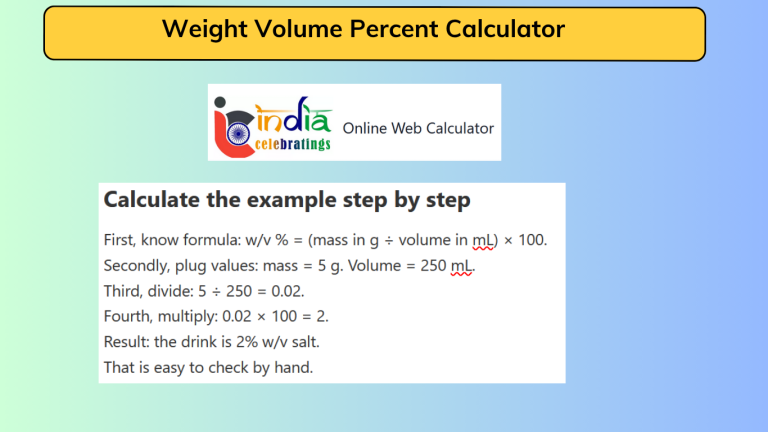Steel Bar Weight Per Foot Calculator
Imagine you’ve got a steel rod in your hands and you want to know how heavy one foot of it is. That’s exactly where a “Steel Bar Weight Per Foot Calculator” comes in.
It’s a neat tool that assists you in estimating how much weight a steel bar will carry per foot of its length. The calculator uses size (diameter or thickness) plus material density to determine the weight.
You simply input numbers and it provides the result instead of you doing all the geometry and conversions manually. This tool is handy for builders, hobbyists, and anyone handling steel bars.
Why and When to Calculate Weight Per Foot
Let’s say an engineer is teaching a small team on site. He picks up a steel bar of diameter 20 mm and length 10 ft. He tells the learner: “We need to check how much one foot of this bar weighs so we can plan lifting and loading safely.”
In this real-life case, you calculate the weight per foot first. Then you assess how many bars you’ll move, how many kilos you’ll transport, and you plan accordingly. Without knowing the weight per foot, you might mis-estimate the load and face trouble during lifting or shipment.
How to Calculate Weight for This Example
- First we know the formula for a round steel bar: Weight = (π/4) × d² × l × ρ.
- Secondly, we pick our values. Suppose diameter d = 20 mm. We want weight per foot (so l = 1 ft ≈ 0.3048 m). Steel density ρ ≈ 7850 kg/m³.
- Thirdly, calculation steps:
- Convert diameter to meters: 20 mm = 0.020 m
- Cross-section area = π/4 × (0.020)² ≈ 0.000314 m²
- Volume for 1 ft length = area × 0.3048 ≈ 0.0000959 m³
- Weight = volume × density ≈ 0.0000959 × 7850 ≈ 0.753 kg
So one foot of that 20 mm bar weighs about 0.75 kg.
Fourthly, you can scale it: if you have 10 feet, weight ≈ 0.75 kg × 10 = 7.5 kg.
FAQs
Q: Can I use this for square or flat bars?
Yes. You just change the cross-section area formula (for example side×side for a square) and then multiply by length and density.
Q: Does the density always stay the same?
Not always. Mild steel uses about 7850 kg/m³, but alloys or stainless steels may differ slightly. Use the correct value for precision.
Q: Why use per-foot instead of per-meter?
A lot of construction work in some regions uses feet. Per-foot gives an instant sense of weight for each foot of bar without converting later.
As a quick trick,
You can approximate: use diameter in mm, square it, divide by 162 to get kg per meter—then convert meter to foot. Using a dedicated calculator avoids unit mix-ups and saves time, especially when many bars or sizes are involved.



